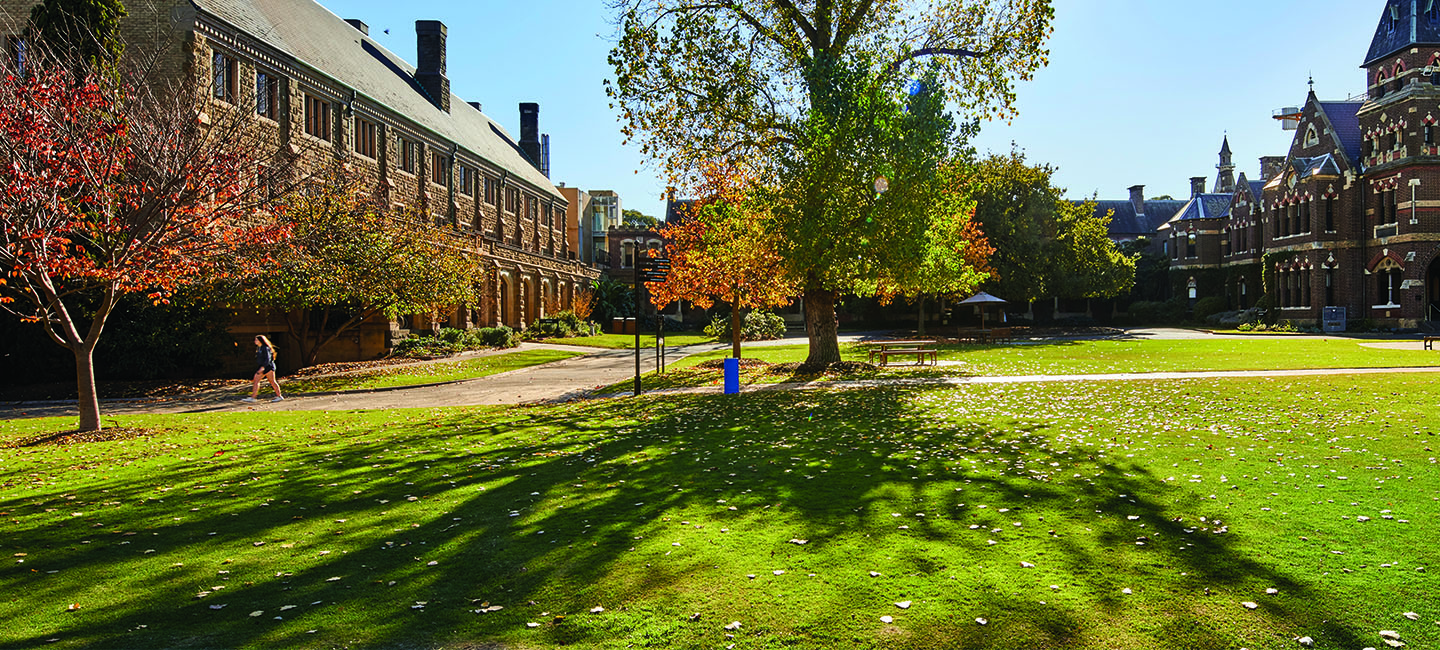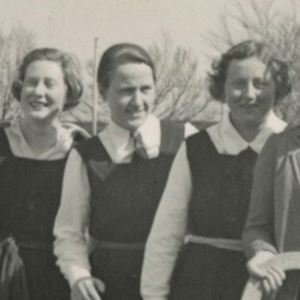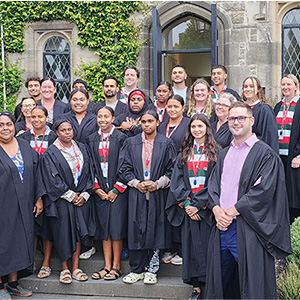

Historical Jeopardy
Trinity College Memorial Wing, affectionately known as Jeopardy, was dedicated by the Archbishop of Melbourne, and officially opened in 1958 by former Trinity student and Rhodes scholar, the Lieutenant Governor, Sir Edmund Herring (TC 1911).
In a period of austerity following the Second World War, the Trinity College Council had requested construction be of the ‘cheapest type possible’. Materials, construction and style would be critical to budget management. Post-War choice of brick was restricted to pressed red or cream. Construction employed brick load-bearing walls and concrete floors. Modern, so-called ‘international style’ was the order of the day. It was not only accepted practice among modern architects to ‘be of one’s own time’, but a keenly felt desire to express an optimistic new world order after two long and destructive wars. There was no possibility, at this particular time then, for emulating old styles, or making a pseudo version of the old sandstone Behan Building across the Bulpadock. Jeopardy was conceived in minimalist terms with sleek, continuous walls, and bands of windows, its stairwell fully glazed on the west elevation now overlooking Trinity’s wide green common (no longer a paddock where cows had grazed, providing the College milk supply).
The Council agreed with the architects’ approach. However, as the first new residential wing to be built on campus for 20 years, its modern, international style contrasted markedly with the University’s established historicist styles for residences, and did not receive universal approval. It was, however, one of a suite of modern, pressed cream brick, multi-storey buildings for the University of Melbourne. These were celebrated in an exhibition at the Ian Potter Museum of Art in 2011–12: Wolfgang Sievers: images of the University of Melbourne 1956–76.
The building, using modern technology for which special Melbourne City Council permission was required, was put out to tender in 1958. Of 11 tenders, the lowest was submitted by John Holland Construction Engineers, for £60,916.
This was the first time precast and prestressed floor slabs were used throughout a building in Melbourne. Savings in time and materials over poured concrete were considerable and Jeopardy was built in eight months. It was an early project for John Holland, which has since become one of Australia’s leading construction companies.
Designed to house 48 students, with studies shared by two students next to their smaller separate bedrooms, the cost represented £1,270 per student. Now due to student preference, the original shared studies have become single study bedrooms. In addition, simply by removing non-load-bearing walls dividing original pairs of bedrooms, spacious single study bedrooms have been achieved equal to the size of the original shared studies.
Access to Jeopardy is via a glazed stairwell at one end of the horizontal building. Here residents climb an open stair within an airy, light-filled space acting as a foyer to the massive masonry of the building’s long walls. This is also international style architecture, but its different materials and lighter construction provide a handsome contrast to the main ‘block’ of the building.
Over time, the Trinity College Memorial Wing’s strong, elegant presence and practical use have withstood critique. The building was designed by McGlashan and Everist Architects, who a few years later, in the 1960s, also designed the Old Warden’s Lodge, and won two Victorian Architectural Medals for the Grimwade house, and for the Reed house, now Heide II at the Museum of Modern Art.
Dr Judith Trimble, Architectural historian
In January, the Jeopardy student rooms were renovated to include new beds, furniture, carpet, windows and blinds, to suit modern student needs. View photos from the 2013 Jeopardy renovations
Trinity College Memorial Win

.jpg?width=300&height=300&ext=.jpg)

